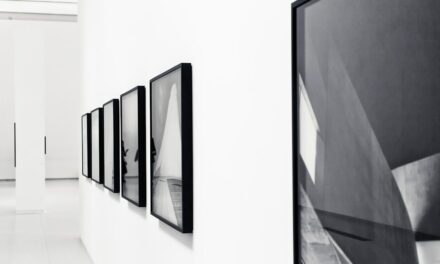Colour and lighting are fundamental elements in the realm of visual art, serving as the backbone of any composition. The interplay between these two components can evoke a myriad of emotions and set the tone for the entire piece. Artists often harness the psychological effects of colour to communicate feelings and ideas.
For instance, warm hues such as reds and oranges can instil a sense of warmth, passion, or urgency, while cooler tones like blues and greens may evoke calmness, serenity, or melancholy. The choice of colour palette is not merely an aesthetic decision; it is a deliberate strategy to engage the viewer’s emotions and guide their interpretation of the artwork. Lighting, on the other hand, plays a crucial role in shaping the perception of colour and form.
The direction, intensity, and quality of light can dramatically alter the mood of a painting. A soft, diffused light can create an ethereal atmosphere, while harsh, direct lighting can introduce stark contrasts and dramatic shadows. Artists often study natural light to understand how it interacts with their subjects, using techniques such as chiaroscuro to enhance depth and dimension.
By mastering the nuances of colour and lighting, artists can create compelling narratives that resonate with viewers on a deeper level.
Summary
- Colour and lighting play a crucial role in setting the tone and atmosphere of a painting.
- The right composition can evoke different moods and emotions in the viewer.
- Capturing atmospheric perspective adds depth and realism to the painting.
- Texture and detail can create a sense of depth and dimension in the artwork.
- Utilising contrast and balance can have a powerful emotional impact on the viewer.
Choosing the Right Composition for the Mood
Balance and Harmony
well-considered composition can evoke specific moods and guide the viewer’s eye through the artwork. For instance, a balanced composition with symmetrical elements may convey harmony and stability, while an asymmetrical arrangement can create tension or dynamism.
Focal Points and Negative Space
The placement of focal points is also critical; a central subject may draw immediate attention, while off-centre elements can lead to a more complex visual journey. Moreover, the use of negative space is an essential consideration in composition. This empty space around subjects can enhance their significance and contribute to the overall mood.
Experimentation and Emotional Resonance
A sparse composition may evoke feelings of isolation or contemplation, while a densely packed arrangement can suggest chaos or vibrancy. Artists often experiment with various compositional techniques, such as the rule of thirds or leading lines, to find the most effective way to express their intended mood. Ultimately, the choice of composition is a powerful tool that shapes not only how a painting is perceived but also how it resonates emotionally with its audience.
Capturing Atmospheric Perspective for Realistic Effects
Atmospheric perspective is a technique that artists employ to create a sense of depth and realism in their work. This method relies on the understanding that objects appear less distinct and more muted in colour as they recede into the distance due to the effects of the atmosphere. By manipulating colour saturation and contrast, artists can simulate this phenomenon, allowing viewers to perceive spatial relationships within the painting.
For example, distant mountains may be rendered in softer blues and greys, while foreground elements are depicted with sharper details and more vibrant colours. Incorporating atmospheric perspective not only enhances realism but also contributes to the overall mood of the piece. A landscape painted with a clear delineation between foreground and background can evoke feelings of vastness and freedom, while a more subdued background may suggest mystery or introspection.
Artists often study natural landscapes to observe how light and atmosphere interact with forms at varying distances. By mastering this technique, they can imbue their work with a sense of place and time, inviting viewers to immerse themselves in the scene.
Creating Depth and Dimension with Texture and Detail
Texture is an essential element in painting that adds richness and complexity to a work of art. It can be achieved through various techniques, such as layering paint, using different brush strokes, or incorporating mixed media elements. The tactile quality of texture not only enhances visual interest but also contributes to the overall emotional impact of a piece.
For instance, rough textures may evoke feelings of ruggedness or turmoil, while smooth surfaces can suggest calmness or elegance. Detail plays a significant role in creating depth and dimension within a painting. The careful rendering of intricate elements can draw viewers in, encouraging them to explore the artwork more closely.
However, it is essential for artists to strike a balance between detail and simplicity; too much detail can overwhelm the viewer and detract from the overall message.
Ultimately, texture and detail work in tandem to create a multi-dimensional experience that captivates and engages.
Utilising Contrast and Balance for Emotional Impact
Contrast is a powerful tool in an artist’s arsenal, capable of heightening emotional responses and drawing attention to specific elements within a painting. This can be achieved through variations in colour, value, or texture. For example, juxtaposing light against dark can create dramatic tension, while contrasting warm colours with cool tones can evoke feelings of conflict or harmony.
Artists often use contrast strategically to highlight focal points or to create visual interest throughout the composition. Balance is equally important in establishing emotional resonance within a painting. A well-balanced composition provides a sense of stability and order, while an unbalanced arrangement can evoke feelings of unease or tension.
Artists may achieve balance through symmetrical arrangements or by distributing visual weight across the canvas in more dynamic ways. By carefully considering both contrast and balance, artists can craft compositions that not only capture attention but also elicit profound emotional reactions from viewers.
Incorporating Movement and Energy into the Scene
Movement is an essential aspect of many artworks, infusing them with life and dynamism. Artists often employ various techniques to suggest motion within their compositions, such as diagonal lines or rhythmic patterns that guide the viewer’s eye across the canvas. The depiction of movement can evoke feelings of excitement or urgency, drawing viewers into the narrative of the piece.
For instance, swirling brushstrokes may suggest wind or water flow, while sharp angles can convey action or tension. Incorporating energy into a scene goes beyond mere representation; it involves capturing the essence of movement and emotion within the subject matter itself. Artists may choose to depict figures in motion or use vibrant colours to convey a sense of vitality.
The choice of medium also plays a role; for example, fluid mediums like watercolour can create soft transitions that suggest movement, while thicker applications of paint may convey strength and forcefulness. By thoughtfully integrating movement and energy into their work, artists can create immersive experiences that resonate with viewers on multiple levels.
Infusing Emotion and Storytelling into the Painting
Art has long been a medium for storytelling, allowing artists to convey complex narratives through visual means. Infusing emotion into a painting involves more than just selecting colours; it requires an understanding of how visual elements interact to communicate feelings and ideas. Artists often draw upon personal experiences or cultural narratives to inform their work, creating pieces that resonate with viewers on an emotional level.
The use of symbolism is another powerful tool for storytelling in art. Objects or colours may carry specific meanings that enhance the narrative being portrayed. For instance, a wilting flower might symbolise loss or decay, while vibrant colours could represent joy or vitality.
By weaving these symbols into their compositions, artists invite viewers to engage with their work on a deeper level, encouraging them to interpret the story being told through their own lens. Ultimately, art becomes a dialogue between the artist and viewer, where emotions are shared and stories unfold.
Experimenting with Different Techniques and Styles for Mood Induction
The exploration of various techniques and styles is vital for artists seeking to induce specific moods within their work. Each technique carries its own unique qualities that can influence how a piece is perceived emotionally. For instance, impressionistic techniques may evoke feelings of nostalgia or fleeting beauty through loose brushwork and vibrant colours, while more realistic styles might convey clarity and precision.
Experimentation allows artists to discover new ways to express their ideas and emotions visually. This could involve mixing mediums—such as combining acrylics with pastels—or exploring unconventional tools like palette knives or sponges for texture creation. By stepping outside traditional boundaries, artists can develop distinctive styles that resonate with their personal vision while also engaging viewers in unexpected ways.
In conclusion, understanding how various elements such as colour, lighting, composition, texture, contrast, movement, emotion, storytelling, and experimentation contribute to mood induction is essential for any artist seeking to create impactful work. Each component plays a vital role in shaping not only how art is perceived but also how it resonates emotionally with its audience. Through careful consideration and exploration of these elements, artists can craft compelling narratives that invite viewers into their unique worlds—ultimately enriching both their own practice and the experience of those who engage with their art.
If you are interested in exploring creativity further, you may enjoy reading the article Exploring Creativity. This article delves into different ways to tap into your creative side and experiment with various artistic techniques. Additionally, if you are looking to enhance your knowledge of art techniques, you may find An Introduction to the Art Technique Grisaille to be informative. This article provides an overview of the grisaille technique, which can be a valuable tool for artists looking to add depth and realism to their work.


